How to Clean Black Sand Out of a Seized Motor
If you’ve spent any time near the West Coast of NZ, you’ll have probably seen the famous black sand beaches stretching the shoreline. Chances are if you’re reading this guide, you’ve had a go at flying your FPV drone at them too! Black sand can cause all sorts of chaos in electronics as the sand is both ferrous and conductive.
Why does black sand seize motors?
The colour of black sand is due to it’s make-up of many different ferrous metals, which are obviously problematic to an electromagnetic motor. When your motors are powered up and spinning, they become highly magnetic, which causes the black sand to become attracted to the magnets inside the bell. This quickly seizes up the motor and bearing, rendering the motor completely stuck.
The only way to completely remove all the sand from your motors, is to remove the bell and give it a good clean. Today we’re going to show you exactly how to do this, and save your expensive motors from ending up in the spare parts bin.
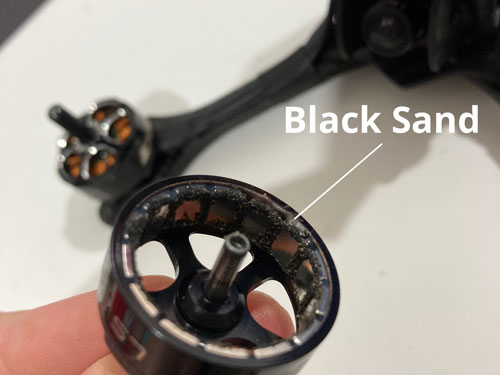
What you’ll need:
- Blu-tak, prestik, or similar
- Pliers
- Isopropyl Alcohol
- 1.5mm Screwdriver or Retaining clip Pliers
1. Removing the motor and bell
The first thing you’ll need to do, is remove the bell from the motor. Because bell contains magnets (and now has black sand in it), the bells will be quite difficult to remove. You’ll first need to remove the securing screw (or clip) from the bottom of the motor. This is usually a 1.5mm screw or retaining clip which holds the bell in to the stator. Some frames do not have center holes where the screw is, meaning you’ll need to remove the motor from the frame to remove the screw.
Once the screw has been removed, it’s time to pull the bell off. The easiest way to do this, is to connect the motor back to the frame (if removed) and to put an M5 nut on top of the bell screw – remember to remove your propellers first! Now grab your pair of pliers and pull the nut from the frame. The bell should eventually pull straight off, leaving sand everywhere and exposing your stator coils.
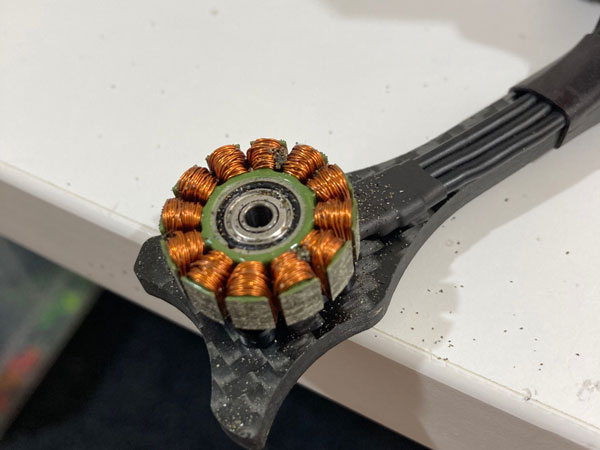
2. Cleaning the Bell and Stator
Now the bell is completely removed from the motor, we can begin cleaning it and taking all the sand out. Grab your blu-tak and begin pressing it inside the bell where the magnets are. Most of the sand will be stuck in the crevices between the magnets so make sure to really get the blu-tak in there tight! You can try use a butter knife to wedge the blu-tak right into the gaps.
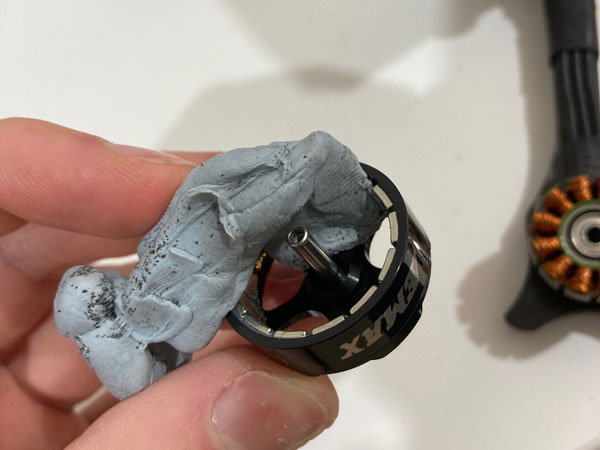
You’ll want to remold your blu-tak after each clean and continue until you cannot see any sand in the bell at all. Don’t forget to clean around the bell shaft and tops of magnets thoroughly too.
3. Cleaning the Bells in Isopropyl Alcohol
Once you have cleaned out all four of your bells, rinse them in a small bowl of isopropyl alcohol. This will help to remove any contaminants and left over blu-tak residue on the bell. You can swish them around in the alcohol to ensure total coverage. Ensure you do this in a clean and open air environment!
IMPORTANT: Take care to only use Isopropyl aclohol – do not use Turpentine, Methylated Spirits, or any other liquids. Using substances other than isopropyl may cause the magnets to become removed from the bell.
You should now have four clean bells.
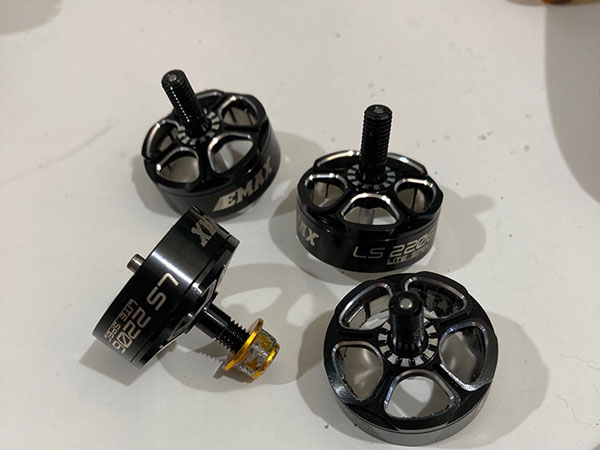
4. Cleaning the Stators
You can now repeat the process you did on the bells with the motor stators. The motor stators will probably not have as much sand in them as the bells, but it’s good to clean them just as well. If you’ve been flying with them for a long time, you’ll probably notice a buildup of dirt in them too.
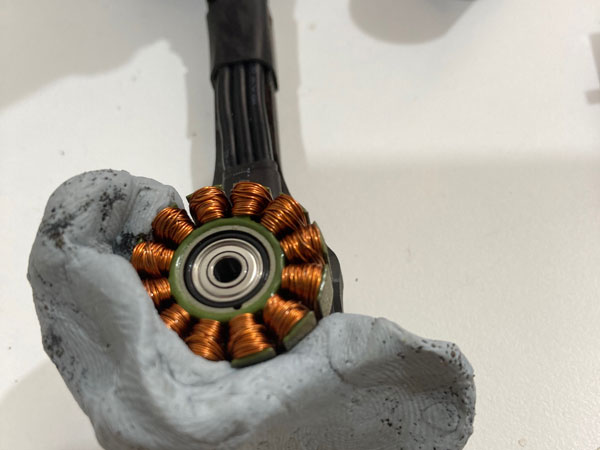
Now you have removed all the sand from the stators, you can also remove the stator from the frame and clean it in isopropyl alcohol if needed. Some stators will be dirtier than others so this step is optional.
5. Reinstalling the Motor Bells
Now all your bells and stators and completely free of sand, you can reinstall the bell on the stator. Once installed, try turning the bell. If you notice any grinding, you may need to remove again and repeat steps 2-4. Sometimes grains of sand will hide in the stators and become attracted to the bells once installed.
Once all motors can freely spin, reinstall the retaining clip or screw to the bottom of the motor. You should now test your motors in betaflight (remove propellers!) before attempting to fly again. Don’t forget to sweep up any black sand from the floor first!
Let us know how you get on in the comments section below. Happy flying!

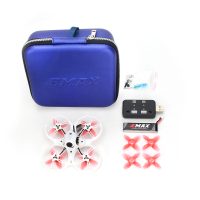
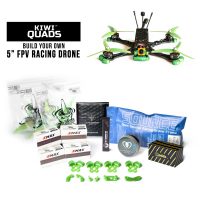


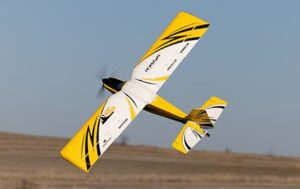

Instructions unclear, got private parts stuck between motor bell and stator